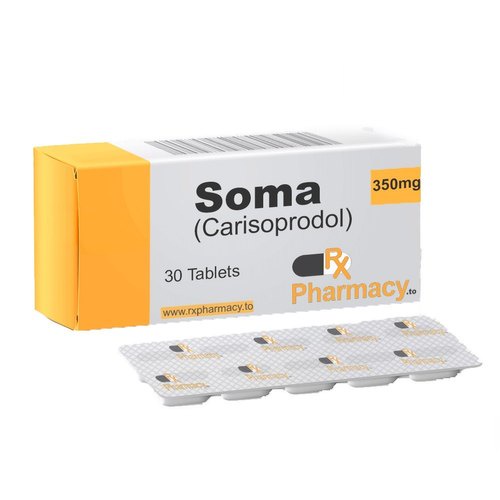Introduction:
Soma, also known by its generic name Carisoprodol, is a prescription muscle relaxant commonly used to alleviate discomfort associated with musculoskeletal conditions such as muscle spasms, strains, and injuries. This article aims to provide a comprehensive overview of Soma, covering its mechanism of action, therapeutic uses, potential side effects, precautions, and more.
-
Mechanism of Action: Soma works as a centrally acting muscle relaxant, meaning it affects the central nervous system to produce its therapeutic effects. It is thought to exert its action by modulating neurotransmission in the spinal cord and interrupting pain signals between nerves and the brain.
-
Therapeutic Uses: Soma is primarily prescribed for the short-term relief of acute musculoskeletal pain and discomfort. It is commonly used in conjunction with rest, physical therapy, and other measures to facilitate the healing process. The drug is typically prescribed for a limited duration to minimize the risk of dependence and adverse effects.
-
Dosage and Administration: Physicians determine the appropriate dosage of Soma based on individual patient factors such as the severity of the condition, medical history, and response to treatment. It is usually taken orally, with or without food, and should be swallowed whole to ensure proper absorption.
-
Potential Side Effects: Like any medication, Soma may cause side effects. Common side effects include drowsiness, dizziness, and headache. Some individuals may also experience gastrointestinal upset. It's essential to inform healthcare providers of any unusual or severe side effects promptly.
-
Precautions and Contraindications: Certain precautions should be taken when using Soma. It may impair cognitive and motor functions, so individuals are advised to avoid activities requiring mental alertness, such as driving, until they understand how the medication affects them. Soma should not be used by individuals with a history of drug abuse or dependence.
-
Potential for Dependence and Withdrawal: Soma has the potential for abuse and dependence, especially when used for extended periods or at higher than prescribed doses. Abrupt cessation may lead to withdrawal symptoms, including anxiety, insomnia, and muscle cramps. It is crucial for patients to follow their healthcare provider's instructions carefully.
-
Interactions with Other Substances: Soma may interact with other medications, including sedatives, alcohol, and certain drugs affecting the central nervous system. It's vital for individuals to inform their healthcare provider about all medications, supplements, and substances they are using.
-
Pregnancy and Lactation: The safety of Soma during pregnancy and lactation is not well-established, and it should be used with caution. Pregnant or nursing individuals should consult their healthcare provider before using this medication.
-
Conclusion: Soma is a valuable tool in managing acute musculoskeletal pain, but its use requires careful consideration of potential risks and benefits. Patients should follow their healthcare provider's recommendations closely and report any adverse effects promptly. As with any medication, an open and honest dialogue between patients and healthcare professionals is crucial to ensuring safe and effective treatment.


No comments yet